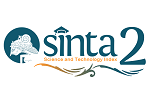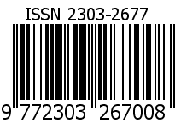Media literacy, information literacy, and novice voters combating online political misinformation
Abstract
Novice voters are susceptible to political misinformation, which can influence democratic decision-making. Thus, reducing the negative impact of political misinformation is essential to support more democratic elections. Utilizing the Stimulus-Organism-Response theoretical framework, this research examines four hypotheses concerning the correlation of media literacy and information literacy on the capability of novice voters to recognize misinformation about politics and their intention to disseminate it on social networks. A quantitative research approach employing cross-sectional surveys was utilized. The sample consisted of 380 novice voters comprising high school students in Cianjur Regency, selected through a stratified random sampling method. Data were collected through online surveys using Google Forms and tested using the application of the Statistical Package for the Social Sciences. According to the findings, media literacy and information literacy simultaneously significantly impact novice voters' competence to recognize political misinformation on social network sites, and higher media and information literacy scales correlate with lower intentions to disseminate political misinformation on social platforms. The findings conclude that media literacy and information literacy perform a crucial function in determining the behavior of beginner voters regarding political misinformation on social media. These findings also support policymakers, media organizations, and educational institutions in designing more effective literacy programs.
Keywords
Full Text:
PDFReferences
Akcayoglu, D. I., & Daggol, G. D. (2019). A Study on the Perceived Media Literacy Level of Preparatory Year Students in a University Setting. Contemporary Educational Technology, 10, 416–429. https://doi.org/10.30935/cet.634195
Anderson, K. E. (2018). Getting acquainted with social networks and apps: combating fake news on social media. Library Hi Tech News, 35(3), 1–6. https://doi.org/10.1108/LHTN-02-2018-0010
Badrinathan, S. (2021). Educative Interventions to Combat Misinformation: Evidence from a Field Experiment in India. American Political Science Review, 115(4), 1325–1341. https://doi.org/DOI: 10.1017/S0003055421000459
Bluemle, S. (2018). Post-Facts: Information Literacy and Authority after the 2016 Election. Portal: Libraries and the Academy, 18, 265–282. https://doi.org/10.1353/pla.2018.0015
Brisola, A. C., & Doyle, A. (2019). Critical Information Literacy as a Path to Resist “Fake News”: Understanding Disinformation as the Root Problem. Open Information Science, 3(1), 274–286. https://doi.org/doi:10.1515/opis-2019-0019
Chen, X., Sin, S.-C. J., Theng, Y.-L., & Lee, C. S. (2015). Why Students Share Misinformation on Social Media: Motivation, Gender, and Study-level Differences. The Journal of Academic Librarianship, 41(5), 583–592. https://doi.org/10.1016/j.acalib.2015.07.003
Ciurel, D. (2016). MEDIA LITERACY: CONCEPTS, APPROACHES AND COMPETENCIES. PROFESSIONAL COMMUNICATION AND TRANSLATION STUDIES, 9 / 2016, 9. https://doi.org/10.59168/VBVC5906
Craft, S., Ashley, S., & Maksl, A. (2017). News media literacy and conspiracy theory endorsement. Communication and the Public, 2(4), 388–401. https://doi.org/10.1177/2057047317725539
Davidovic, J. (2022). On how to defend oneself against media manipulation: The role of the informational and media literacy. CM: Communication and Media, 17, 97–119. https://doi.org/10.5937/cm17-34211
Druick, Z. (2016). The Myth of Media Literacy. International Journal of Communication, 10, 1125–1144. https://ijoc.org/index.php/ijoc/article/view/2797/1583
Durante, G. C. (2022). Winnowing Fake vs Fact: Media Literacy and Media Message Evaluation Practices of First-Time Voter College Students. Journal of Higher Education Theory and Practice, 22(14). https://doi.org/10.33423/jhetp.v22i14.5533
Durodolu, O. O., & Ibenne, S. K. (2020). The fake news infodemic vs information literacy. Library Hi Tech News, 37(7), 13–14. https://doi.org/10.1108/LHTN-03-2020-0020
El-Rayess, M., Chebl, C., Mhanna, J., & Hage, R.-M. (2018). Fake news judgement: The case of undergraduate students at Notre Dame University-Louaize, Lebanon. Reference Services Review, 46(1), 146–149. https://doi.org/10.1108/RSR-07-2017-0027
Ford, T. W., Yankoski, M., Facciani, M., & Weninger, T. (2023). Online media literacy intervention in Indonesia reduces misinformation sharing intention. Journal of Media Literacy Education, 15(2), 99–123. https://doi.org/10.23860/JMLE-2023-15-2-8
Gershberg, Z., & Illing, S. (2022). The Paradox of Democracy: Free Speech, Open Media, and Perilous Persuasion (1st ed.). University of Chicago Press.
Gherghina, S., & Mitru, B. (2023). First-time voters and electoral campaigns: Explaining online engagement in Romania. First Monday, 28(9). https://doi.org/10.5210/fm.v28i9.12741
Guess, A. M., Lerner, M., Lyons, B., Montgomery, J. M., Nyhan, B., Reifler, J., & Sircar, N. (2020). A digital media literacy intervention increases discernment between mainstream and false news in the United States and India. Proceedings of the National Academy of Sciences of the United States of America, 117(27), 15536–15545. https://doi.org/10.1073/pnas.1920498117
Guess, A., Nagler, J., & Tucker, J. (2019). Less than you think: Prevalence and predictors of fake news dissemination on Facebook. Science Advances, 5, eaau4586. https://doi.org/10.1126/sciadv.aau4586
Guess, A., Nyhan, B., & Reifler, J. (2018). Selective Exposure to Misinformation: Evidence from the Consumption of Fake News During the 2016 U.S. Presidential Campaign. European Research Council. https://about.fb.com/wp-content/uploads/2018/01/fake-news-2016.pdf
Hameleers, M. (2022). Separating truth from lies: comparing the effects of news media literacy interventions and fact-checkers in response to political misinformation in the US and Netherlands. Information, Communication & Society, 25(1), 110–126. https://doi.org/10.1080/1369118X.2020.1764603
Höttecke, D., & Allchin, D. (2020). Reconceptualizing nature-of-science education in the age of social media. Science Education, 104(4), 641–666. https://doi.org/10.1002/sce.21575
Husna, H. T. (2023, June 28). Sampai Mei 2023, Kominfo Identifikasi 11.642 Konten Hoaks. Direktorat Jenderal Aplikasi Informatika : Kominfo RI. https://aptika.kominfo.go.id/2023/06/sampai-mei-2023-kominfo-identifikasi-11-642-konten-hoaks/
Hwang, Y., Ryu, J. Y., & Jeong, S.-H. (2021). Effects of Disinformation Using Deepfake: The Protective Effect of Media Literacy Education. Cyberpsychology, Behavior, and Social Networking, 24(3), 188–193. https://doi.org/10.1089/cyber.2020.0174
Igbinovia, M. O., Okuonghae, O., & Adebayo, J. O. (2021). Information literacy competence in curtailing fake news about the COVID-19 pandemic among undergraduates in Nigeria. Reference Services Review, 49(1), 3–18. https://doi.org/10.1108/RSR-06-2020-0037
Intyaswati, D., Maryani, E., Sugiana, D., & Venus, A. (2021). Using Media for Voting Decision among First-time Voter College Students in West Java, Indonesia. Academic Journal of Interdisciplinary Studies, 10, 327. https://doi.org/10.36941/ajis-2021-0028
Ireland, S. (2018). Fake news alerts: Teaching news literacy skills in a meme world. The Reference Librarian, 59(3), 122–128. https://doi.org/10.1080/02763877.2018.1463890
Jones-Jang, S. M., Mortensen, T., & Liu, J. (2021). Does Media Literacy Help Identification of Fake News? Information Literacy Helps, but Other Literacies Don’t. American Behavioral Scientist, 65(2), 371–388. https://doi.org/10.1177/0002764219869406
Kahne, J., & Bowyer, B. (2016). Educating for Democracy in a Partisan Age: Confronting the Challenges of Motivated Reasoning and Misinformation. American Educational Research Journal, 54(1), 3–34. https://doi.org/10.3102/0002831216679817
Kasmani, M. F. (2023). Undi 18: Understanding the political participation of first-time Malay voters through social media. SEARCH Journal of Media and Communication Research, Special Issue: SEARCH 2022 Conference, 33–48.
Kemp, S. (2022, February 15). Digital 2022: Indonesia. https://datareportal.com/reports/digital-2022-indonesia
Khan, M. L., & Idris, I. K. (2019). Recognise misinformation and verify before sharing: a reasoned action and information literacy perspective. Behaviour & Information Technology, 38(12), 1194–1212. https://doi.org/10.1080/0144929X.2019.1578828
Kim, M. J., Lee, C.-K., & Jung, T. (2020). Exploring Consumer Behavior in Virtual Reality Tourism Using an Extended Stimulus-Organism-Response Model. Journal of Travel Research, 59, 69–89. https://doi.org/10.1177/0047287518818915
Lee, H. (2020). Voters’ involvement, attitude, and confidence in the era of new media. Palgrave Communications, 6(1), 1. https://doi.org/10.1057/s41599-019-0368-9
Machete, P., & Turpin, M. (2020). The Use of Critical Thinking to Identify Fake News: A Systematic Literature Review. In M. Hattingh, M. Matthee, H. Smuts, I. Pappas, Y. K. Dwivedi, & M. Mäntymäki (Eds.), Responsible Design, Implementation and Use of Information and Communication Technology (pp. 235–246). Springer International Publishing.
Martens, H., & Hobbs, R. (2015). How Media Literacy Supports Civic Engagement in a Digital Age. Atlantic Journal of Communication, 23(2), 120–137. https://doi.org/10.1080/15456870.2014.961636
Melki, J., Tamim, H., Hadid, D., Makki, M., El Amine, J., & Hitti, E. (2021). Mitigating infodemics: The relationship between news exposure and trust and belief in COVID-19 fake news and social media spreading. PLoS ONE, 16(6 June). https://doi.org/10.1371/journal.pone.0252830
Mihailidis, P., & Viotty, S. (2017). Spreadable Spectacle in Digital Culture: Civic Expression, Fake News, and the Role of Media Literacies in “Post-Fact” Society. American Behavioral Scientist, 61(4), 441–454. https://doi.org/10.1177/0002764217701217
Mudave, E. (2016). Information Literacy (IL) learning experiences: A literature review. Inkanyiso: Journal of Humanities and Social Sciences, 8(1). https://www.ajol.info/index.php/ijhss/article/view/140005/129723
Musgrove, A. T., Powers, J. R., Rebar, L. C., & Musgrove, G. J. (2018). Real or fake? Resources for teaching college students how to identify fake news. College & Undergraduate Libraries, 25(3), 243–260. https://doi.org/10.1080/10691316.2018.1480444
Ohme, J. (2019). When digital natives enter the electorate: Political social media use among first-time voters and its effects on campaign participation. Journal of Information Technology & Politics, 16(2), 119–136. https://doi.org/10.1080/19331681.2019.1613279
Pandita, S., Mishra, H. G., & Chib, S. (2021). Psychological impact of covid-19 crises on students through the lens of Stimulus-Organism-Response (SOR) model. Children and Youth Services Review, 120, 105783. https://doi.org/https://doi.org/10.1016/j.childyouth.2020.105783
Pedriza, S. B. (2021). Sources, Channels and Strategies of Disinformation in the 2020 US Election: Social Networks, Traditional Media and Political Candidates. Journalism and Media, 2(4), 605–624. https://doi.org/10.3390/journalmedia2040036
Pennycook, G., Bear, A., Collins, E. T., & Rand, D. G. (2020). The Implied Truth Effect: Attaching Warnings to a Subset of Fake News Headlines Increases Perceived Accuracy of Headlines Without Warnings. Management Science, 66(11), 4944–4957. https://doi.org/10.1287/mnsc.2019.3478
Pérez-Escoda, A., Pedrero Esteban, L., Romero, J., & Jimenez-Narros, C. (2021). Fake News Reaching Young People on Social Networks: Distrust Challenging Media Literacy. Publications, 9. https://doi.org/10.3390/publications9020024
Piccone, T. (2018). Democracy and digital technology. Sur - International Journal on Human Rights, 27(27), 29–38. https://sur.conectas.org/en/democracy-and-digital-technology/
Republik Indonesia. (2017). Undang-undang Republik Indonesia Nomor 7 Tahun 2017 Tentang Pemilihan Umum. https://jdih.kpu.go.id/detailuu-6c4d54564530516c4d3051253344
Rubin, V. L. (2019). Disinformation and misinformation triangle: A conceptual model for “fake news” epidemic, causal factors and interventions. Journal of Documentation, 75(5), 1013–1034. https://doi.org/10.1108/JD-12-2018-0209
Shao, C., Ciampaglia, G. L., Varol, O., Yang, K.-C., Flammini, A., & Menczer, F. (2018). The spread of low-credibility content by social bots. Nature Communications, 9(1), 4787. https://doi.org/10.1038/s41467-018-06930-7
Tang, Y., Luo, C., & Su, Y. (2023). Understanding health misinformation sharing among the middle-aged or above in China: roles of social media health information seeking, misperceptions and information processing predispositions. Online Information Review. https://doi.org/10.1108/OIR-04-2023-0157
UNESCO. (2023, April 20). Information Literacy. Information for All Programme. https://www.unesco.org/en/ifap/information-literacy
Vosoughi, S., Roy, D., & Aral, S. (2018). The spread of true and false news online. Science, 359(6380), 1146–1151. https://doi.org/10.1126/science.aap9559
Wardle, C., & Derakhshan, H. (2017). Information Disorder : Toward an interdisciplinary framework for research and policy making. https://rm.coe.int/information-disorder-report-november-2017/1680764666
Weeks, B. E., & Gil de Zúñiga, H. (2019). What’s Next? Six Observations for the Future of Political Misinformation Research. American Behavioral Scientist, 65(2), 277–289. https://doi.org/10.1177/0002764219878236
Wu, M. (2022). What Drives People to Share Misinformation on Social Media during the COVID-19 Pandemic: A Stimulus-Organism-Response Perspective. International Journal of Environmental Research and Public Health, 19(18). https://doi.org/10.3390/ijerph191811752
Xiao, X., & Su, Y. (2023). Stumble on information or misinformation? Examining the interplay of incidental news exposure, narcissism, and new media literacy in misinformation engagement. Internet Research, 33(3), 1228–1248. https://doi.org/10.1108/INTR-10-2021-0791
Xiao, X., Su, Y., & Lee, D. K. L. (2021). Who Consumes New Media Content More Wisely? Examining Personality Factors, SNS Use, and New Media Literacy in the Era of Misinformation. Social Media + Society, 7(1), 2056305121990635. https://doi.org/10.1177/2056305121990635
Yaffe, J. (2017). From the Editor—Fake News, Information Literacy, and Scholarly Communication in Social Work. Journal of Social Work Education, 53(3), 369–371. https://doi.org/10.1080/10437797.2017.1326714
Zhang, G., Yue, X., Ye, Y., & Peng, M. Y. P. (2021). Understanding the Impact of the Psychological Cognitive Process on Student Learning Satisfaction: Combination of the Social Cognitive Career Theory and SOR Model. Frontiers in Psychology, 12. https://doi.org/10.3389/fpsyg.2021.712323
Zheng, L., Cai, J., Wang, F., Ruan, C., Xu, M., & Miao, M. (2022). How Health-Related Misinformation Spreads Across the Internet: Evidence for the “Typhoon Eye” Effect. Cyberpsychology, Behavior, and Social Networking, 25(10), 641–648. https://doi.org/10.1089/cyber.2022.0047
Zhu, L., Li, H., Wang, F.-K., He, W., & Tian, Z. (2020). How online reviews affect purchase intention: a new model based on the stimulus-organism-response (--) framework. Aslib Journal of Information Management, 72(4), 463–488. https://doi.org/10.1108/AJIM-11-2019-0308
DOI: https://doi.org/10.24198/jkip.v12i1.53845
Refbacks
- There are currently no refbacks.
Copyright (c) 2024 Author(s)

This work is licensed under a Creative Commons Attribution-ShareAlike 4.0 International License.
Jurnal Kajian Informasi & Perpustakaan Indexed by:
Jurnal Kajian Informasi & Perpustakaan
Program Studi Perpustakaan dan Sains Informasi d.h. Program Studi Ilmu Perpustakaan
Fakultas Ilmu Komunikasi, Universitas Padjadjaran
Jl. Raya Bandung-Sumedang Km. 21 Jatinangor, Sumedang, Indonesia 45363
WA: +62 813-1323-7581 (Chat Only)
Telepon: +62227796954
Faksimile: +62227794122
email: jkip.fikom@unpad.ac.id
Jurnal Kajian Informasi & Perpustakaan is licensed under a Creative Commons Attribution-ShareAlike 4.0 International License
Jurnal Kajian Informasi & Perpustakaan supervised by:












2.png)
.png)



